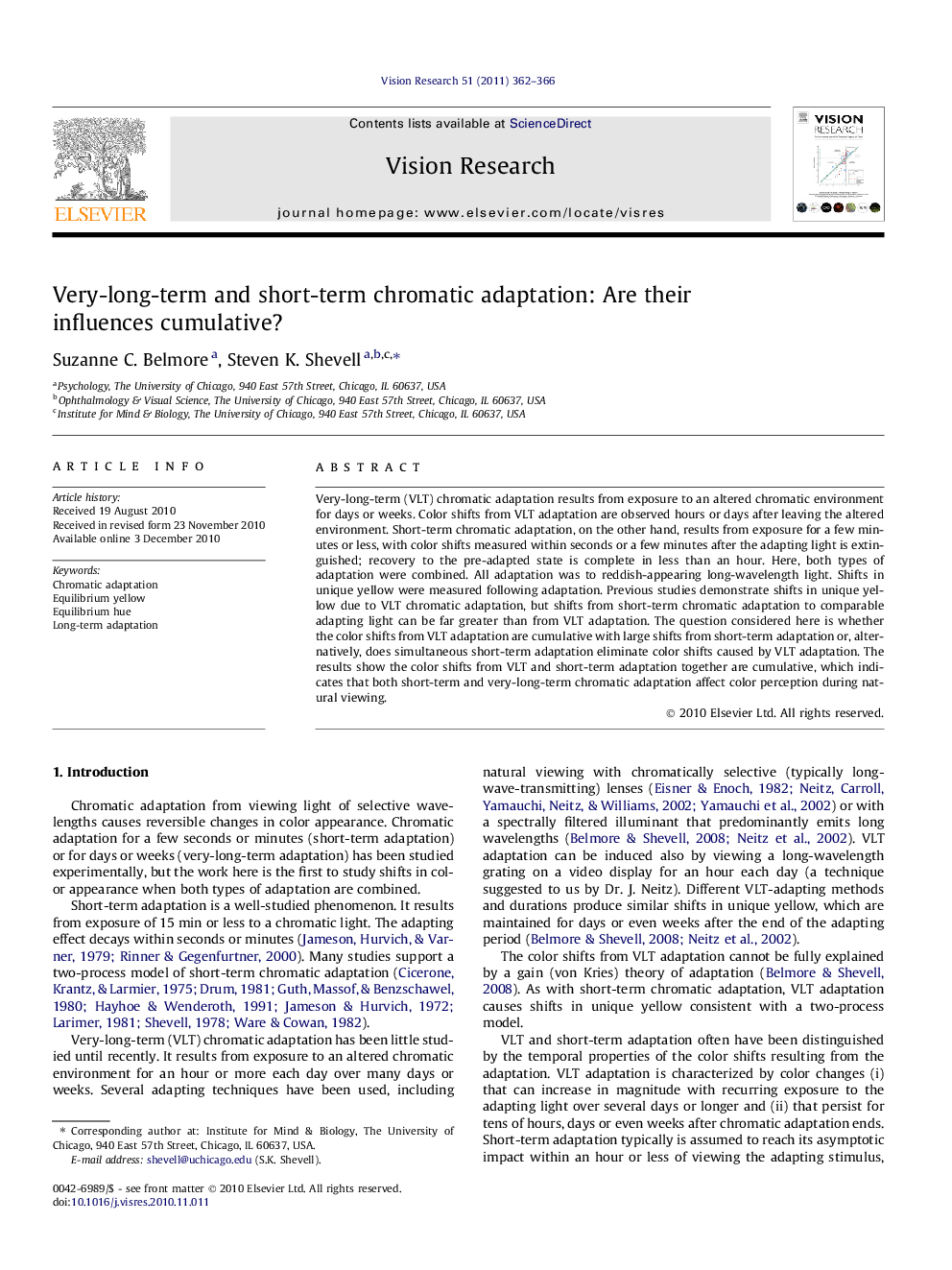| Article ID | Journal | Published Year | Pages | File Type |
|---|---|---|---|---|
| 4034274 | Vision Research | 2011 | 5 Pages |
Very-long-term (VLT) chromatic adaptation results from exposure to an altered chromatic environment for days or weeks. Color shifts from VLT adaptation are observed hours or days after leaving the altered environment. Short-term chromatic adaptation, on the other hand, results from exposure for a few minutes or less, with color shifts measured within seconds or a few minutes after the adapting light is extinguished; recovery to the pre-adapted state is complete in less than an hour. Here, both types of adaptation were combined. All adaptation was to reddish-appearing long-wavelength light. Shifts in unique yellow were measured following adaptation. Previous studies demonstrate shifts in unique yellow due to VLT chromatic adaptation, but shifts from short-term chromatic adaptation to comparable adapting light can be far greater than from VLT adaptation. The question considered here is whether the color shifts from VLT adaptation are cumulative with large shifts from short-term adaptation or, alternatively, does simultaneous short-term adaptation eliminate color shifts caused by VLT adaptation. The results show the color shifts from VLT and short-term adaptation together are cumulative, which indicates that both short-term and very-long-term chromatic adaptation affect color perception during natural viewing.
Research highlights► Color appearance measured after very-long-term (VLT) and short-term chromatic adaptation. ► Measurements made with only VLT adaptation, only short-term adaptation, or both simultaneously. ► Results showed color shifts from VLT and short-term adaptation were cumulative. ► VLT adaptation is neither suppressed nor eliminated by short-term adaptation. ► VLT adaptation, therefore, is an important process in natural viewing.
